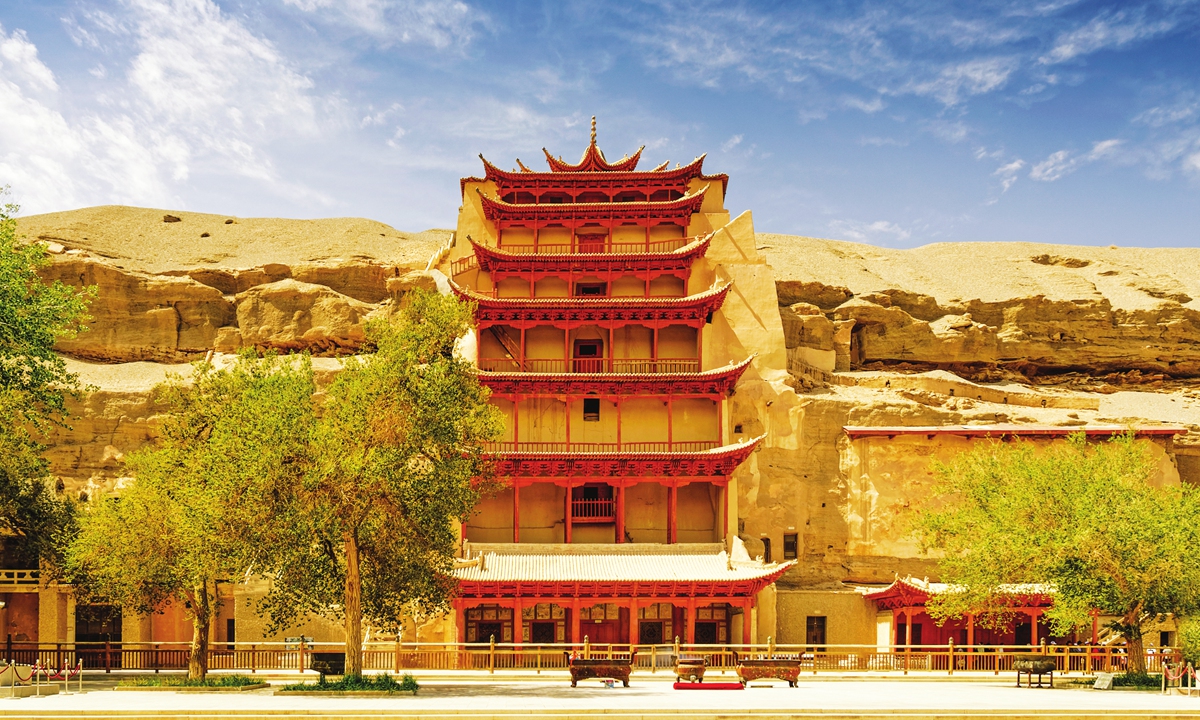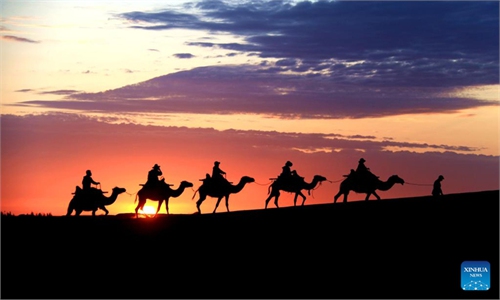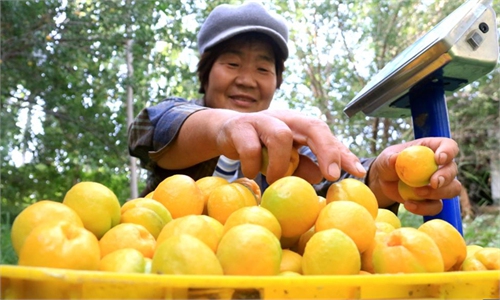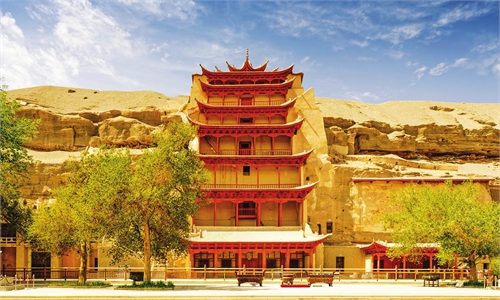ARTS / ART
World artists gather in Dunhuang to take inspiration from bustling ancient city

The Mogao Grottoes, also known as the Thousand Buddha Grottoes, in Dunhuang, Northwest China's Gansu Province Photo: VCG
Activities have been conducted recently between domestic and foreign young artists in Dunhuang, Northwest China's Gansu Province, one of the most important cities in China's ancient history, both economically and culturally.
A total of 18 young artists from 18 countries including Canada, Japan, South Korea, Russia, and the US gathered together and joined the five-day event that ended on September 2.
"Gansu is an important part on the passage of China's Belt and Road [B&R] Initiative. We wish to take that advantage to use this place, especially the city of Dunhuang, as a platform to host artists from around the world so that they can communicate and learn from each other," said Wang Yufang, dean of the Academy of Fine Arts, Northwest Normal University, at last week's opening ceremony.
The young artists paid visits to several famous historical sites including the Mogao Grottoes, Crescent Lake, and the Singing Sand Hills.
The Gobi Desert also gives a real sense of the ancient Dunhuang and brings back a bustling business scene of the Silk Road in ancient times, and painters were able to depict historical and cultural relics and the natural landscape.
"For many of the artists, including me, this is our first time to come to Dunhuang. We've heard many stories and legends and now we have a chance to feel it in person and hopefully put inspirations we drew from here into our creations," said Chichina Yang Ni, a Chinese-American artist.
Beauty of the grottoes
As an important cultural site along the ancient Silk Road, the Mogao Grottoes combine influences from ancient India, Persia, and Afghanistan. The grottoes are also a cultural symbol of the open and inclusive Silk Road spirit, so they were chosen as the young artists' first stop.
In 366 AD, the first cave of the Mogao Grottoes was excavated by a monk. The grottoes have since become a symbol of inclusive art from Central and South Asia and are evidence of a prosperous ancient society.
Statues and murals in the grottoes were made throughout the Wei, Jin, Sui and Tang dynasties, and they are well preserved thanks to the dry weather in northwestern China.
"I have always wanted to see grotto art and to learn about the artistic relics. Before I came here, I actually had a lot of ideas about Dunhuang, but when I stood inside the grottoes and saw in person the Buddha statues that were shaped by craftsmen thousands of years ago, I found out that the greatness is far beyond my imagination," Ni added.
Sally Huang Wong, an artist from Panama, stood in front of an archway of the Mogao Grottoes and did a sketch.
"This archway may not be as famous as the nine-story pagoda, but I chose as it caught my interest. For me, this activity is a process of mutual learning with artists from other countries. Each artist has a different feeling toward art and a different perspective. I look forward to having more in-depth exchanges with them," she said.
"Dunhuang art is an outstanding example of the fusion of Chinese and foreign cultures.
Today, when we walk into the Mogao Grottoes, we can see many exotic traces," said Yue Feng, associate professor at the School of Fine Arts, Northwest Normal University.
In the murals, one can find certain patterns exported from Persia and exotic paintings from India, both of which have had an impact on the art all the way to the plains in Central China.
"But one fact that cannot be ignored is that Confucianism and Taoism also played an important part in the forming of the Dunhuang Grottoes. The two combined into a new style making them as vivid and charming as they are," Yue added.
Yangguan, a city of the Han Dynasty that was a key hub for ancient China to communicate with the outside world through the Silk Road, was the artists' second stop.
Though surrounded by dessert, the place was rich in water resources, with streams coming down from far away and all-year-round snow on the Altun Mountains and Qilian Mountains.
"Dunhuang used to function as a center for trade and art. It was a cultural center connecting the world and us, where splendid culture and art forms such statues and murals were born," said Zhang Haitong, another young artist.
"Today we are doing the same thing, just like our predecessors. We seek a dialogue with the world and we want the world to know more about us," Zhang added.



